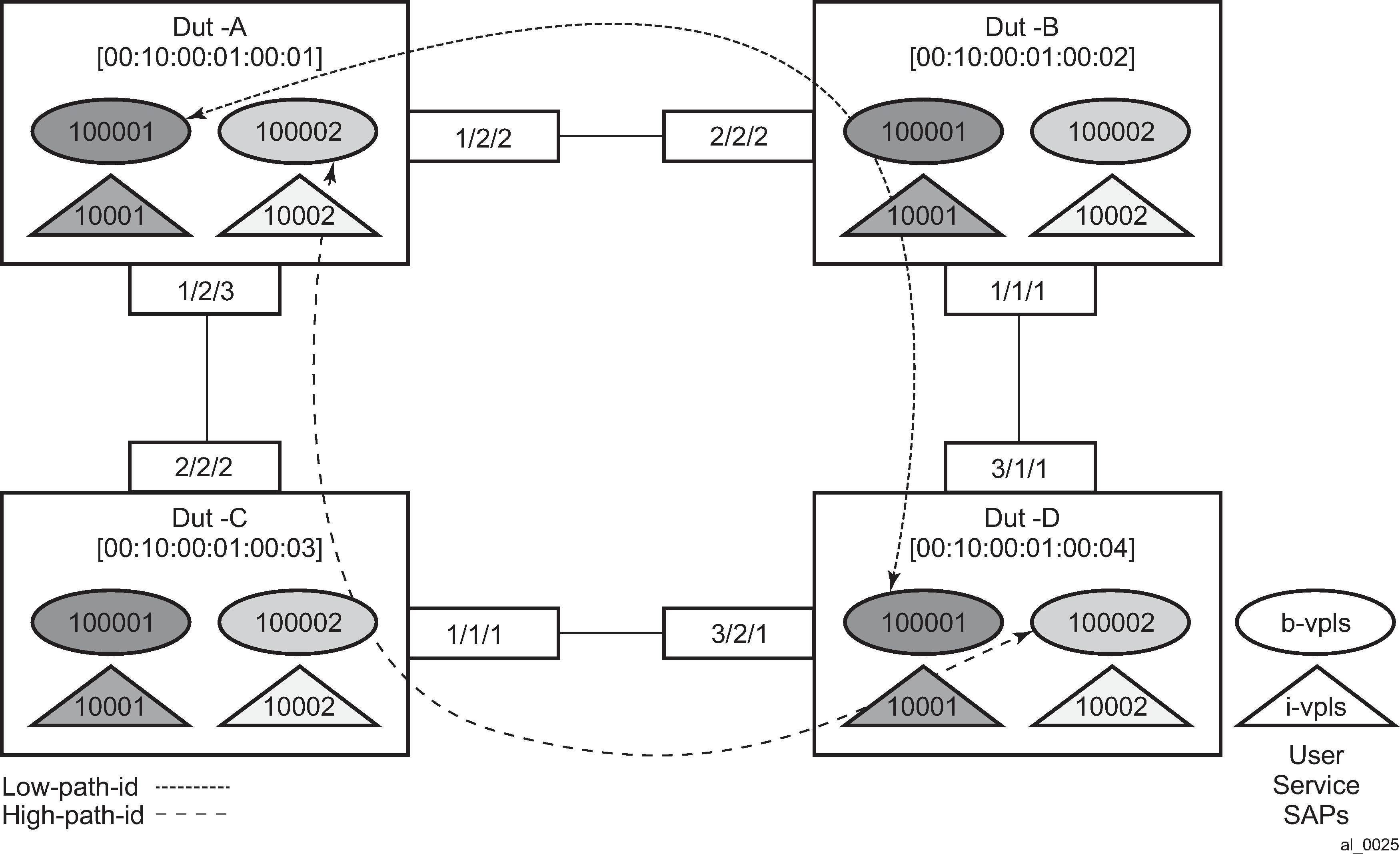
Figure 1 shows an example network showing four nodes with SPB B-VPLS. The SPB instance is configured on the B-VPLS 100001. B-VPLS 100001 uses FID 1 for SPB instance 1024. All B-MACs and I-SIDs are learned in the context of B-VPLS 100001. B-VPLS 100001 has an i-vpls 10001 service, which also uses the I-SID 10001. B-VPLS 100001 is configured to use VID 1 on SAPs 1/2/2 and 1/2/3 and while the VID does not need to be the same as the FID the VID does however need to be the same on the other side (Dut-B and Dut-C).
A user B-VPLS service 100002 is configured and it uses B-VPLS 10001 to provide forwarding. It fate shares the control topology. In Figure 1, the control B-VPLS uses the low-path-id algorithm and the user B-VPLS uses high-path-id algorithm. Any B-VPLS can use any algorithm. The difference is illustrated in the path between Dut A and Dut D. The short dashed line through Dut-B is the low-path-id algorithm and the long dashed line thought Dut C is the high-path-id algorithm.